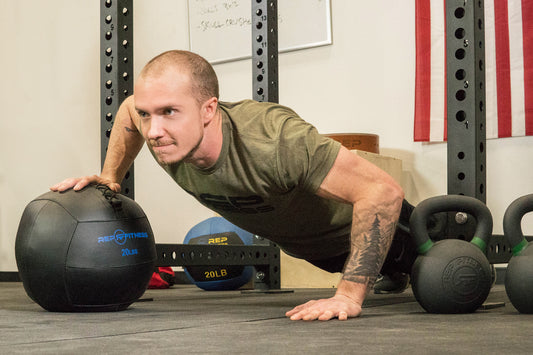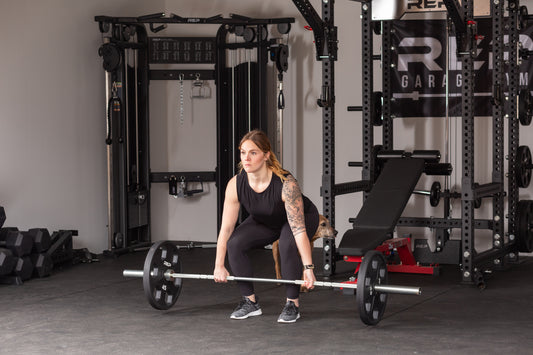
For iron addicts, bodyweight exercises can be cast aside as easy. Then there are dips.
Dips, when performed properly, have a long list of benefits. And they can be challenging with no added weight. As you get stronger, it’s easy to add difficulty with a dip belt attached to plates.
Here’s a closer look at why you want to add dips into your workout routine – and how to do it right.
Muscles Worked by Dips

Dips are typically used to train triceps but they also work the chest. Dips also can work your back, forearms (when holding the bars), shoulders, core, and more, as you work to keep balanced and in control. That’s why they’re considered a compound movement.
How to do Dips

To do a dip, lean your torso slightly forward. Engage your core before you move. Think about pushing your chest out in front of the shoulders. Lower your body by bending your arms while leaning forward, keeping your neck neutral. Lower until your shoulders are below your elbows. Lock out your elbows at the top of the movement.
It may help to think of a dip as a sort of upright bench press or suspended push-up, except instead of thinking of the dip as a vertical movement, focus on squeezing your elbows in toward the back. This will help engage the pecs.
Make sure you don’t let your shoulders roll forward or shrug up toward your ears. Lock them back and in place. Think about pinching your shoulder blades together on your back.
Also, you don’t need to go deeper than shoulders below elbows. Keep your hands in alignment under your shoulders. Don’t arch your lower back too much. It may be easier to keep your lower back neutral if you dip with straight legs so you can squeeze your glutes. But if your dip bar isn’t high enough to do that, bend your legs at the knee and cross your ankles – still keeping your glutes and core tight.
Finally, make sure your dips aren’t swinging all over the place, legs and torso flailing. Don’t let your chest rock backward and forward. That ain’t it, my dude.
How to Progress Dips

If you can’t properly do a bodyweight dip, practice negatives. Just lower your body carefully until your shoulders are below elbows, dismount, and start again. These help build strength and body awareness to prepare you for the full exercise.
You can also try the assistance of resistance bands or a lifting buddy, but be careful that it doesn’t change the exercise too much. Really, the best way to get better at dips is (wait for it) to keep practicing dips.
As you get stronger, add weight to a Dip Belt. You can also attach a Dip Belt to a Belt Squat attachment for added resistance. Or attach the Leather Utility Loop to your lifting belt, and attach that to a cable machine or weights.
If you don’t have a belt, you can also try to hold a dumbbell between your feet.
How to Add Dips Into Your Home Gym

Dip bars are essentially two straight, stable bars running parallel to each other. Some gyms have a designated dip station, but you don’t need a separate piece of equipment to do dips at home.
It’s easy to incorporate dips into your home gym without taking up any extra space. A Drop-In Dip Attachment simply slides into your power rack uprights like J-cups. The pegs fit into the upright holes, and you can quickly move the attachment up and down.
REP’s Double C-cup design makes the Drop-In Dip Attachment incredibly stable, with no jiggle or wiggle-wiggle, for sure. (Oof, big cringe.)
You can also do dips on the versatile Iso Arm attachment.

